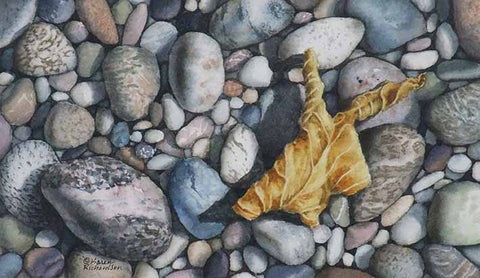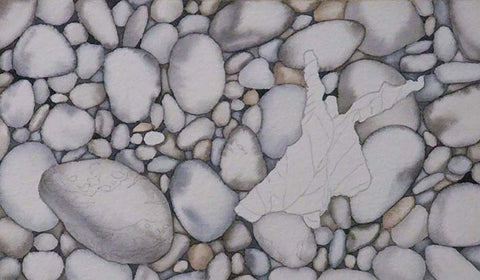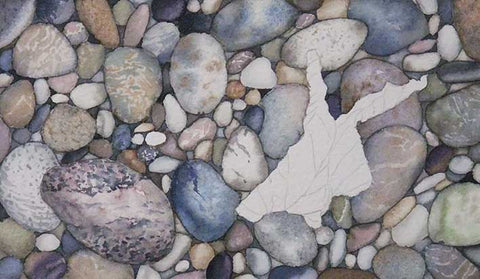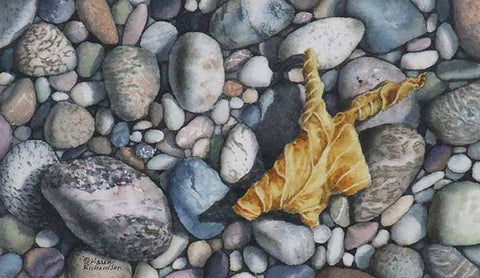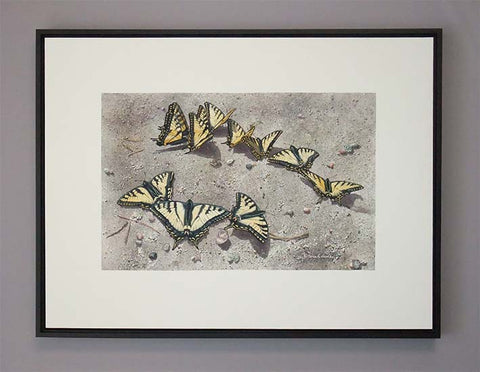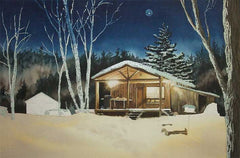
This spring, I taught a 3-day Hollyhock and Stone watercolour class, for intermediate and advanced students. We each chose different reference photos and painted different blossom colours. I chose a pink and burgundy mix (shown above) for my demonstration painting, with a finished size of 16 x 12".

We began by drawing our composition on layout paper (using proportional squares to enlarge the photo image), then tracing that drawing onto our 300 lb watercolour paper using graphite transfer paper. Then we masked out the fine veins inside the flowers with masking fluid to preserve the white paper.
For my paints, I wanted to evaluate a new (to me) brand of watercolour paint - Schmincke, which is made in Germany. I chose Helio Blue Reddish, Permanent Carmine, and Gamboge Gum Modern as my three primary colours, and mixed all of the painting colours from these three. I loved the smoothness of this brand, and look forward to doing more paintings with my Schmincke paints.
I find the most successful method for painting plant life is to work up the shadows in gradual layers, and adding a coat of brighter overall colour at the end. When the first shadow layer is dry, the next layer adds deeper colour, just in the darker shadow areas. The photo above shows the flowers after three layers and the green buds and stems after two layers.

In the photo above, I have added one more shadow layer on the green buds and stems, followed by a bright green glaze over all the green parts. When this was dry, I painted the cement mortar of the stone wall with a two-tone tan.

In the photo above, my students are pictured in my studio, working on their hollyhock compositions. My demonstration painting is at the bottom, and you can see several of my favourite #12 round sable/synthetic brushes beside my painting.

Once the mortar sections had dried, I wet each building stone, dropped in two paint colours, and then sprinkled on salt to produce a mineral effect. I used a cool neutral mix (blue-gray), and a warm neutral mix (brown-gray). Once this was fully dry, I brushed off the salt. Then, using a dark gray mixture, I added some shadowy cracks between the mortar sections, and some subtle shadows to make the mortar look less flat.

In the photo above, I have added shadows across the faces of the stones, using a charcoal gray-black (mixed from the primaries), and added more shadow details to the mortar. I removed the masking fluid from the petals and washed over them with a pale watery pink to change the veins from white to pale pink.

We're on the home stretch now. I deepened the burgundy colours around the centre of the main flower and added some soft shadows to the upper petals. I added a soft blue wash over some of the stones to create a greater variety of stone colours. I added a very watery blue glaze over the mortar to make it less dominant.
This completed painting Hollyhock and Stone, watercolour 16 x 12", will be on display at my solo exhibition at The Shipyards in Gravenhurst from July 28 to August 11, 2017.
Subscribe to Karen's Newsletter if you wish to see more painting stories, travel tales, studio news updates, or notices of upcoming painting classes and exhibitions.




















